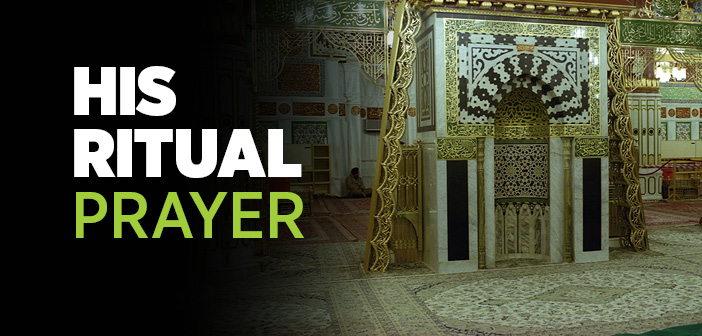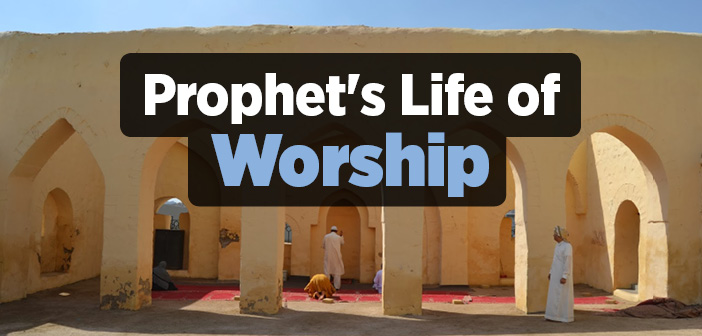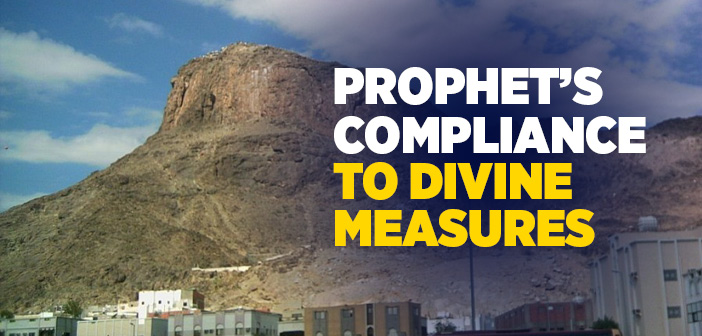What is ritual prayer of prophet muhammad?
Muslims’ prayer is the best and most perfect manifestation of servitude. It is the most significant act of worship and the most beneficial to humanity. This is why Allah the Almighty repeatedly pointed out its merits and announced it as the greatest sign of religion. And Allah’s Apostle (pbuh) set its times, conditions, elements, concessions, manners, and its supererogatory acts in every detail.
Prayer consists of the following three essentials of servitude:
- Heart gets filled with reverence through contemplation of Allah’s Might and Majesty
- Tongue clearly states His Might and this reverence
- Limbs act in accordance with the reverence in the heart; they stand respectfully before the Divine presence, bend down from the waist, and then prostrate. In this act of worship, all limbs, beginning from the heart and tongue, present their submission and respect to Allah in unison. How wonderfully a poet expresses this in the following lines:
There exist three things enumerating the blessings given to me:
My hands, my tongue, and my heart hidden (from eyes) …
The most perfect prayer, which is the peak of respect and servitude to Allah the Almighty, was performed by the Messenger of Allah (pbuh). He told his ummah “Pray as you have seen me praying” (Bukhari, Adhan, 18) and commanded them to follow him. This is why we should first know how the Prophet (pbuh) performed his prayers and how much attention he paid to his prayers.
Below is a two-rak’ah[1] prayer of the Messenger of Allah (pbuh):
When he wanted to pray, he would first turn to Qiblah or to the direction of Ka’bah. He would raise his hands up to his earlobes and say “Allahu Akbar – Allah is the Greatest.” He would put his right hand over his left hand and tie them below his navel. Then he would commence his ritual prayer with the supplication of “subhanaka.” After that he would recite the chapter “Fatiha” from the Qur’an and say “amin” quietly at the end of his recitation. He also advised the believers to do the same and say “amin” at the end of “Fatihah.”
After reciting some additional verses from the Qur’an, Allah’s Messenger (pbuh) would bend down from the waist saying “Allahu Akbar,” and put his palms on his knees. He would say silently “subhana rabbiyal azim” three times, and then straighten back up saying “samiallahu liman hamidah”, and then would say “rabbana laka’l hamd”. While going down to sajdah or prostration, he would say “Allahu Akbar.” During prostration, he neither would spread his arms to the ground nor stick them to his body. He would hold his feet standing and his toes would face towards the Qiblah. He would silently say “subhana rabbiyal ‘ala’” three times in the position of prostration.
He would raise his head from sajda saying “Allahu Akbar,” sit down on his knees and pause briefly in this position, and then prostrate down for the second sajda saying “Allahu Akbar.” After sajda, he would stand up for the second rak’ah of the prayer saying “Allahu Akbar.” He would perform the second rak’ah just like the first one. After performing two sajdas, he would sit down and put his palms on his thighs and recite the supplications of “Tahiyyat, Allahumma Salli and Allahumma Barik.” Following these prescribed supplications, he allows believers to make whichever supplication they wish. He would conclude his ritual prayer by turning his face first to his right then to his left and say “as-salamu alaikum wa rahmatullah.” After the completion of the canonical prayer, he would say some other prayers and remembrances.
After the recitation of Fatihah, Allah’s Messenger (pbuh) usually recited the eighty first (surat al-Takwir), fiftieth (surat Qaf), thirty sixth (surat Yasin), and fifty sixth (surat al-Waqi’ah) chapters of the Qur’an at dawn prayer. However, on Fridays he usually recited the thirty second (surat al-Sajda) and seventy sixth (surat al-Insan) chapters of the Qur’an at dawn prayer. At dawn prayer, he used to recite more verses in the first rak’ah than the second. At noon and afternoon prayers, he usually recited short chapters of the Qur’an, such as the ninety eight (surat al-Layl), eighty fifth (surat al-Buruj), eighty sixth (surat al-Tariq), and etc. For the evening prayers, he sometimes recited the fifty second (surat Tur) and seventy seventh (surat al-Mursalat) chapters of the Qur’an. According to reports, he even recited surat al-Mursalat at his last evening prayer which he led the congregation.
Once when Abdullah b. Abbas (may Allah be pleased with them) recited the surat al-Mursalat in the evening prayer, his mother Ummu’l Fadl said: “My dear son! By reciting this chapter, you stirred up my longing for the Prophet (pbuh); because I heard the Prophet reciting Surat al-Mursalat (77) in the Maghrib prayer, and after that prayer he did not lead us in any prayer till he died.” (Bukhari, Adhan, 98)
There were times when the Prophet (pbuh) recited surat al-Kafirun (109) in the first rak’ah of the evening prayer and surat al-Ikhlas (112) in its second rak’ah. In the night prayer, he would recite chapters like surat al-Duha (93), al-Tin (95), al-Munafiqun (63), al-A’la (87), al-Layl (92), and al-Alaq (96) among others. Once he recited the surat al-Inshiqaq (84) in his night prayer and when he recited the prostration verse, he went down to prostrate.
In his Witr prayer, he used to recite surat al-A’la (87) in the first rak’ah, surat al-Kafirun (109) in the second and surat al-Ikhlaṣ (112) in the last rak’ah. As soon as he finished his prayer by greeting to his right and left, he used to say “Subhana’l Maliki’l Quddus” three times and increase his voice and prolong for the third one. (M. Asım Köksal, VIII, 93-97)
[1] A rak’ah is a cycle or a unit of repeated movements in Muslims’ prayer
Source: An Excellent Exemplar, Osman Nuri Topbaş, Erkam Publications





